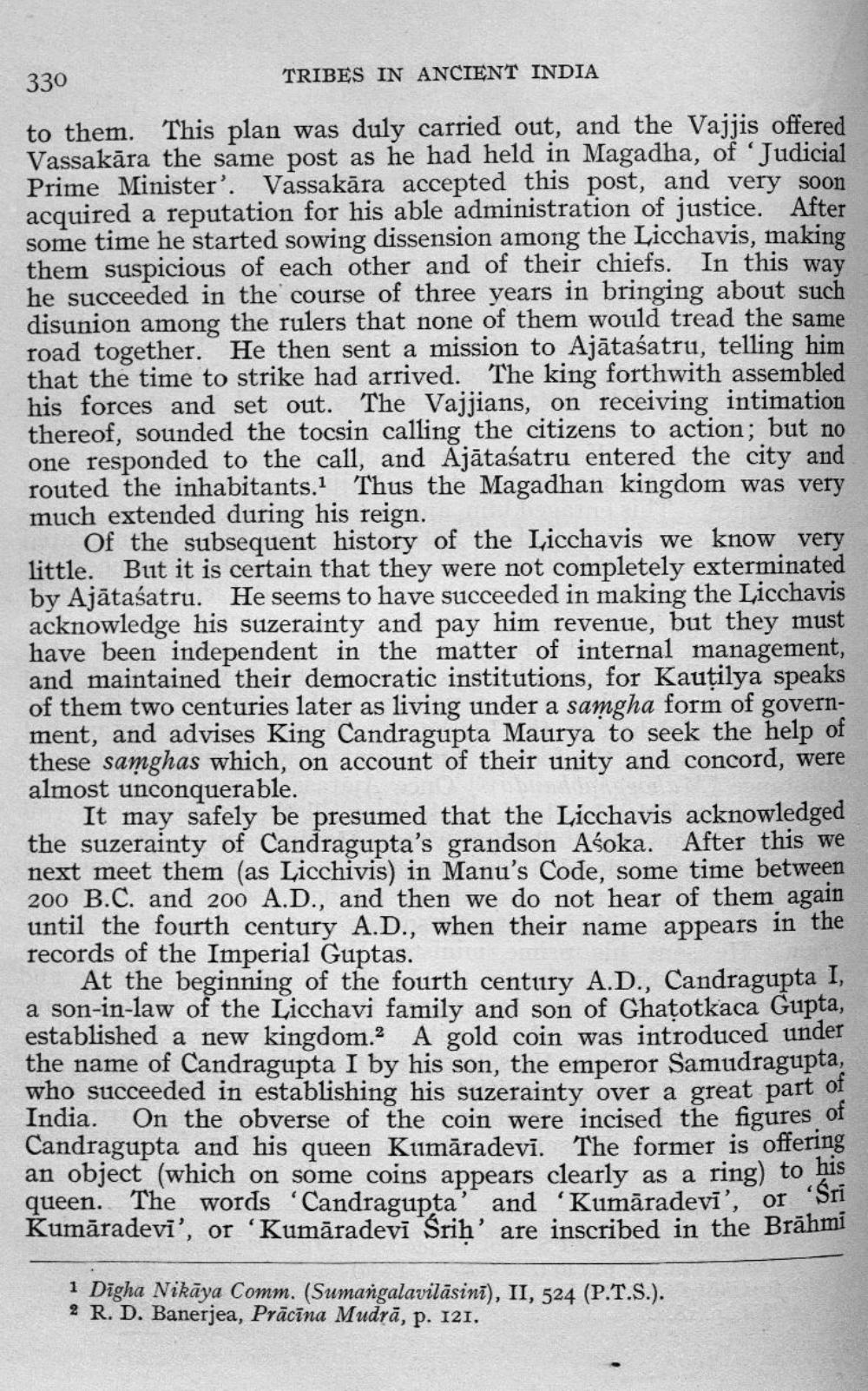________________
330
TRIBES IN ANCIENT INDIA
to them. This plan was duly carried out, and the Vajjis offered Vassakāra the same post as he had held in Magadha, of 'Judicial Prime Minister'. Vassakāra accepted this post, and very soon acquired a reputation for his able administration of justice. After some time he started sowing dissension among the Licchavis, making them suspicious of each other and of their chiefs. In this way he succeeded in the course of three years in bringing about such disunion among the rulers that none of them would tread the same road together. He then sent a mission to Ajātaśatru, telling him that the time to strike had arrived. The king forthwith assembled his forces and set out. The Vajjians, on receiving intimation thereof, sounded the tocsin calling the citizens to action; but no one responded to the call, and Ajātaśatru entered the city and routed the inhabitants.1 Thus the Magadhan kingdom was very much extended during his reign.
Of the subsequent history of the Licchavis we know very little. But it is certain that they were not completely exterminated by Ajātaśatru. He seems to have succeeded in making the Licchavis acknowledge his suzerainty and pay him revenue, but they must have been independent in the matter of internal management, and maintained their democratic institutions, for Kautilya speaks of them two centuries later as living under a samgha form of government, and advises King Candragupta Maurya to seek the help of these samghas which, on account of their unity and concord, were almost unconquerable.
It may safely be presumed that the Licchavis acknowledged the suzerainty of Candragupta's grandson Aśoka. After this we next meet them (as Licchivis) in Manu's Code, some time between 200 B.C. and 200 A.D., and then we do not hear of them again until the fourth century A.D., when their name appears in the records of the Imperial Guptas.
At the beginning of the fourth century A.D., Candragupta I, a son-in-law of the Licchavi family and son of Ghatotkaca Gupta, established a new kingdom. A gold coin was introduced under the name of Candragupta I by his son, the emperor Samudragupta, who succeeded in establishing his suzerainty over a great part of India. On the obverse of the coin were incised the figures of Candragupta and his queen Kumaradevi. The former is offering an object (which on some coins appears clearly as a ring) to his queen. The words 'Candragupta' and 'Kumaradevi', or 'Sri Kumaradevi', or 'Kumāradevi Srih' are inscribed in the Brahmi
1 Digha Nikaya Comm. (Sumangalavilasini), II, 524 (P.T.S.). 2 R. D. Banerjea, Präcīna Mudra, p. 121.




